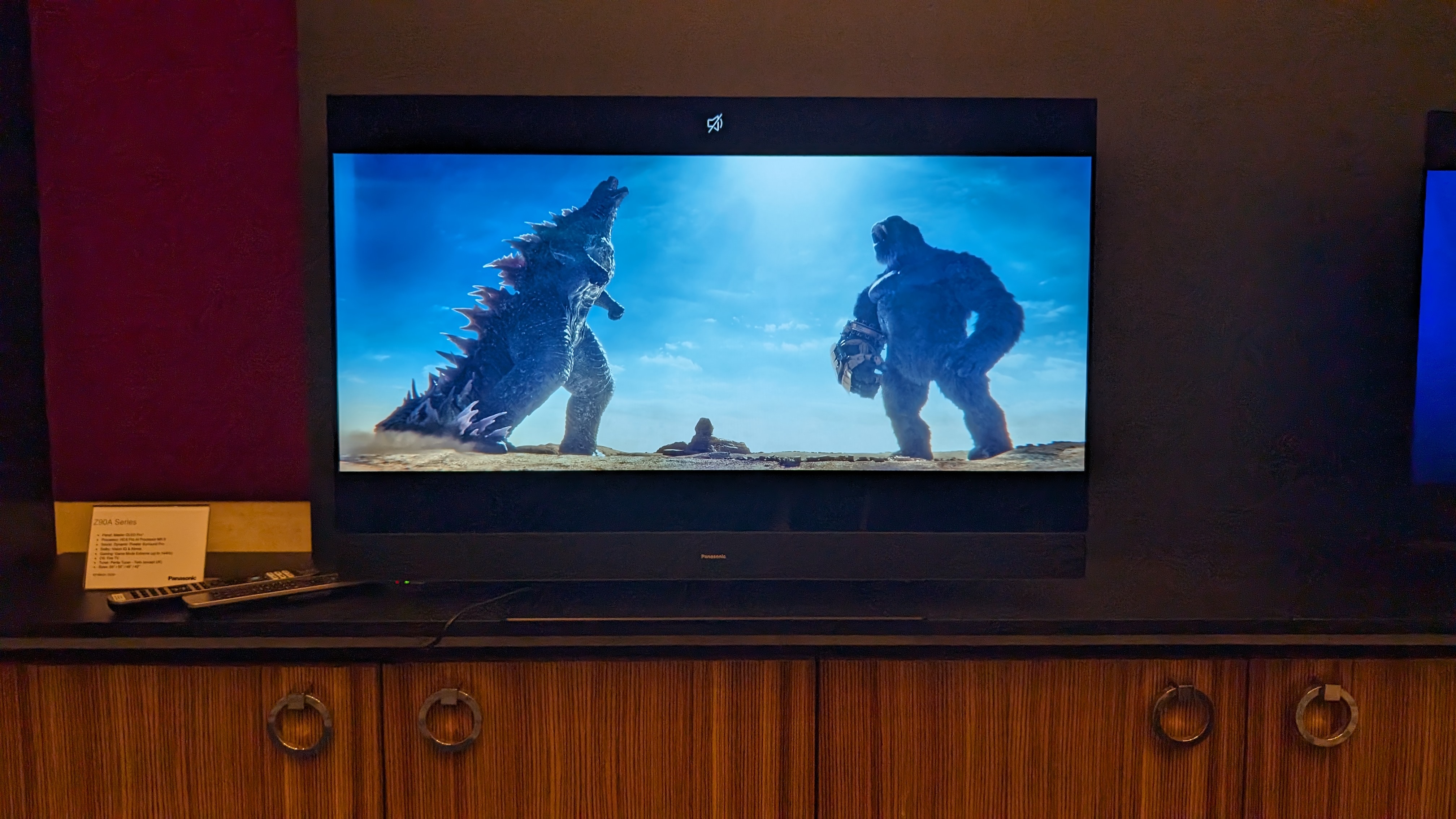Early Verdict
Panasonic's doubling down on its mission to deliver "authentic" picture quality
Pros
- +
Move to Fire OS expands app support
- +
New CPU offers a wealth of picture options and new features
- +
Generally excellent gaming features
Cons
- -
Still only two HDMI 2.1 inputs
- -
Not a huge hardware upgrade on the previous model
Why you can trust What Hi-Fi?
Panasonic lifted the lid on its latest step-down OLED TV, the Z90A, at an exclusive press event covered by the What Hi-Fi? team in Dusseldorf, Germany. This OLED sits below the flagship MLA OLED, the Z95A, that launched at CES in January.
The question on every home cinema fan’s lips will be, how does it compare to the LG C4, which we just reviewed and awarded five stars, and is it better than the outgoing, award-winning Sony A80L?
Some key information remains under wraps, and we're yet to get all three sets into our test rooms for direct comparisons, so it’s too early to answer that question definitively.
But, after muscling past the crowds to get an opening look and listen to the Panasonic Z90A, we can confirm it is an incredibly interesting TV – one that could potentially re-cement Panasonic’s place as the best option for home cinema fans eager for an “as the director intended” experience. Read on for all the details and our initial impressions.
Price
Panasonic was incredibly tight-lipped about the Z90A’s price. However, we did get a minor nod that it wouldn’t be a radical departure from its previous step-down OLEDs.
The 55-inch Panasonic MZ15000B that this TV is set to replace launched at £2200 (around $2800 / AU$4100), while the larger 65-inch model retailed for £2900 (around $3700 / AU$5400) when it first arrived last year, so that gives us a hint. We will update this hands-on review when we have the official details.
Design
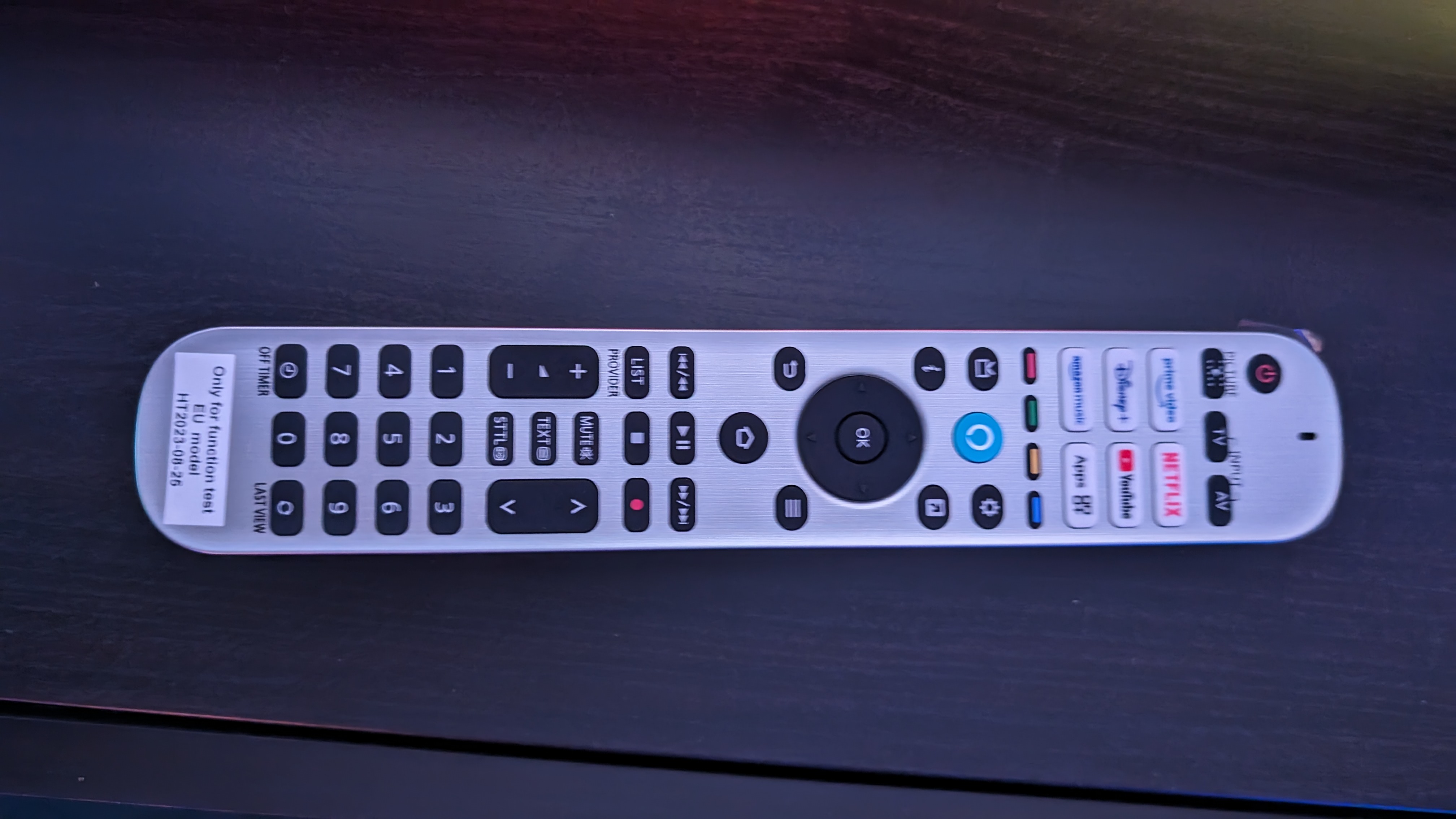
The Panasonic Z90A looks similar to its outgoing predecessor and will be available in the same 65, 55, 48 and 42-inch sizes as the MZ1500B. Sadly, Panasonic representatives said we would have to wait and see when we asked if the smaller 48 and 42-inch variants would come to the UK. Last year the smaller sizes were specific to Europe. (Panasonic hasn’t sold its TVs in the US for many years.)
One big change between the Z90A and MZ1500B is that the 2024 model will feature a speaker bar sound system across all sizes. This is now called a Dynamic Theatre Surround Pro setup. Last year, the bar was absent on the smaller 48 and 42-inch MZ1500B models. Panasonic claims this is based on customer feedback, and the fact that most people buying smaller OLEDs don’t want to invest in a separate sound system, but still want “good” audio. (Our TV and AV Editor, Tom Parsons, would beg to differ.)
We agree on the good audio part, but Panasonic's attached sound systems have long been a marmite feature in the What Hi-Fi? test rooms. While some have been better than the average TV speaker, many of us would prefer the option to buy a cheaper model without speakers in order to add our own. We’re certainly yet to find a TV with inbuilt speakers that can match, let alone beat, the experience you’ll get with even a moderately-priced soundbar, such as the Sonos Beam Gen 2, never mind stereo or surround sound speakers.
Elsewhere, the stand and control remain largely unchanged. This means the Panasonic Z90A has a rectangular base without the swivel mechanism seen on the more expensive Panasonic Z95A and last year's Panasonic MZ2000. We’ve found that stand incredibly useful for swapping cables, boxes and consoles in and out but we realise most people will be doing far less fiddling.
Also absent is a backlight on the remote control, which made our attempts to quickly run through the TV’s settings in the dark demo room a bit tricky – though this is also a gripe we have with the C4 and Award-winning Sony A80L.
Features
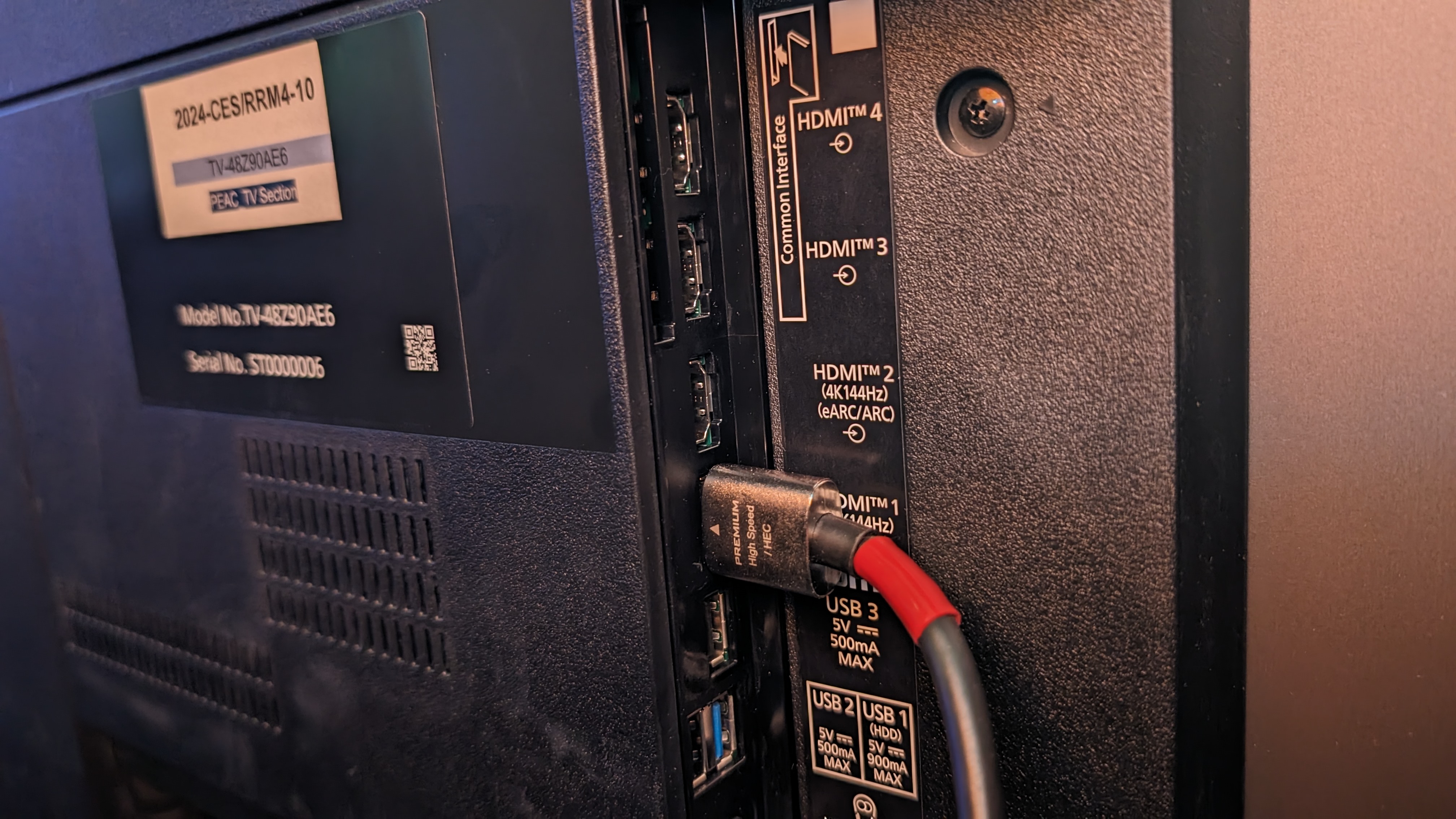
The TV is fairly well-stacked when it comes to next-generation features. Though it doesn’t have the Award-winning, brightness boost micro lens array (MLA) tech seen on its premium sibling, the Z95A, the TV does carry Panasonic’s Master OLED Pro branding. This, plus the same flagship HCX Pro AI Processor MK II chip seen on the Panasonic Z95A, should lead to a wealth of picture and processing improvements, including a higher maximum brightness, according to Panasonic.
Master Pro is a branding Panasonic uses to refer to TVs that it has given extra attention when it comes to picture tuning, to deliver the "most authentic" picture possible.
The chip also brings a new “4K Remaster Engine”, which claims to use AI to boost clarity and reduce banding. There's also Dolby Vision IQ with Precision Detail support, which aims to improve the picture quality when watching Dolby Vision content.
The set is sadly limited to two HDMI 2.1 inputs, one of which doubles as an eARC. This won’t be a big deal if you only game on one console or don’t care about adding a separate Dolby Atmos setup to the Z90A, but for people who do, it will mean a lot of faffing about with cables.
It’s also a little sad as the TV otherwise has a solid suite of gaming features to help it compete with the best gaming TVs on the market. Dolby Vision Gaming HDR is supported, which is great news for Xbox Series X/S gamers, and if you’re one of the select few PC gamers who can afford to use a giant OLED as a monitor, it has 144Hz with VRR support. There's also a True Game Mode, which optimises the TV to reduce latency and input lag.
Panasonic is using Amazon’s Fire OS operating system rather than its own My Home Screen. We never had huge gripes with My Home Screen, but its lack of UK catch-up apps and slightly chunky interface did let the side down somewhat last year. A move to Amazon could be a definite positive if implemented well.
Picture
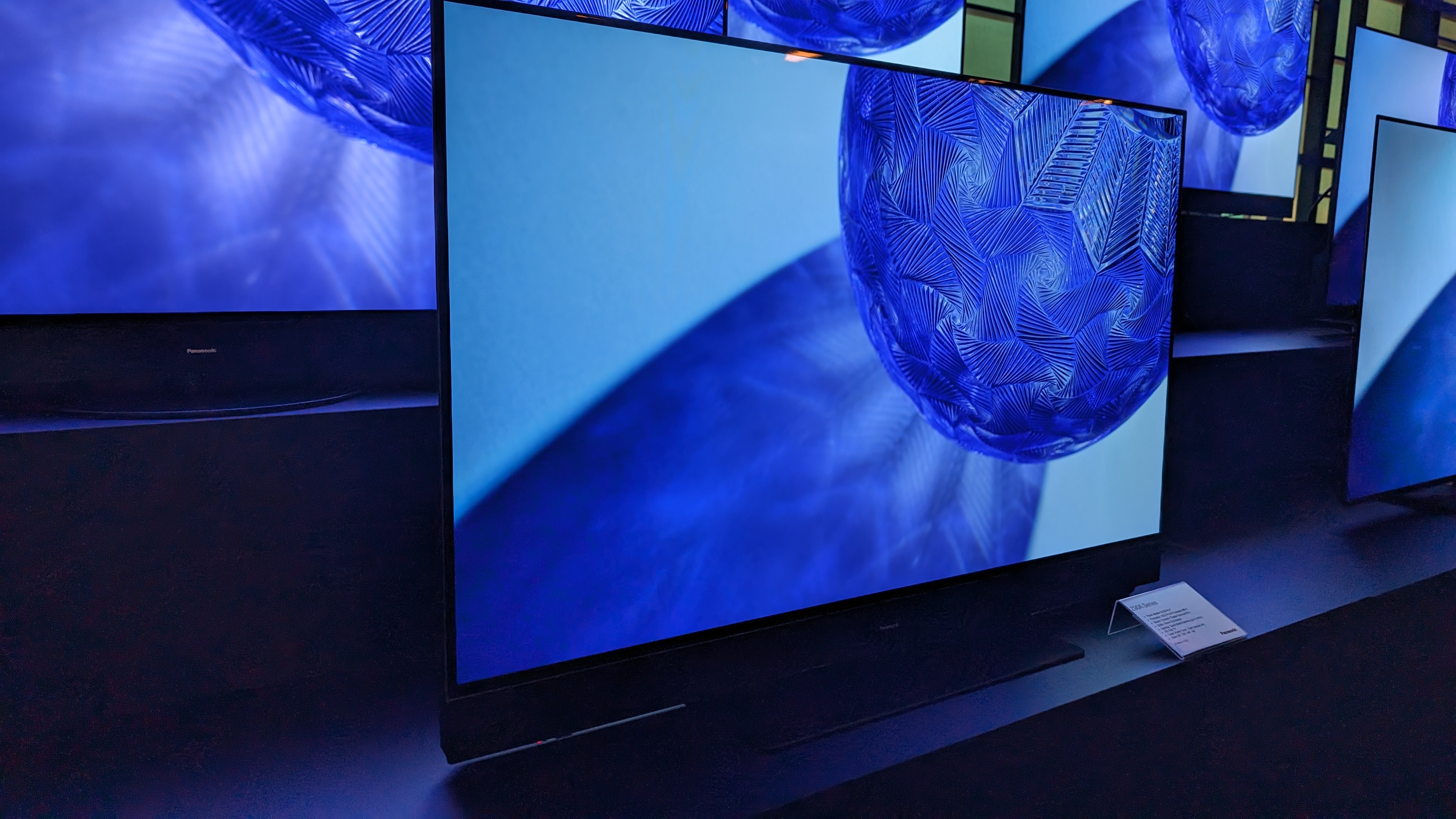
The big question, though, is how good is the TV's picture? Sadly, this is a little tricky for us to answer, as we didn't see the set in a particularly good setting. We viewed the 48-inch model in a demo room next to Panasonic’s current generation OLEDs, while the 42-inch variant was in a bright room next to last year's MZ1500B. Not ideal but not atypical at product launch events.
However, the demo footage we saw did look impressive, with the blooms in emerging fireworks holding a wonderful sparkle. The set's colours looked bright and dynamic, with plenty of detail in even the brightest scenes. Stray reflections on a shot panning over refined glasswork looked particularly impressive in terms of insight.
Compared to the MZ1500B, colours seemed to have a similar “as the artist intended” feel, and a scene from King Kong vs Godzilla was wonderfully dynamic while still delivering natural and realistic skin tones.
We look forward to seeing how the Panasonic Z90A performs in our test rooms during a full review, in a controlled environment, and with a wide range of content.
Sound
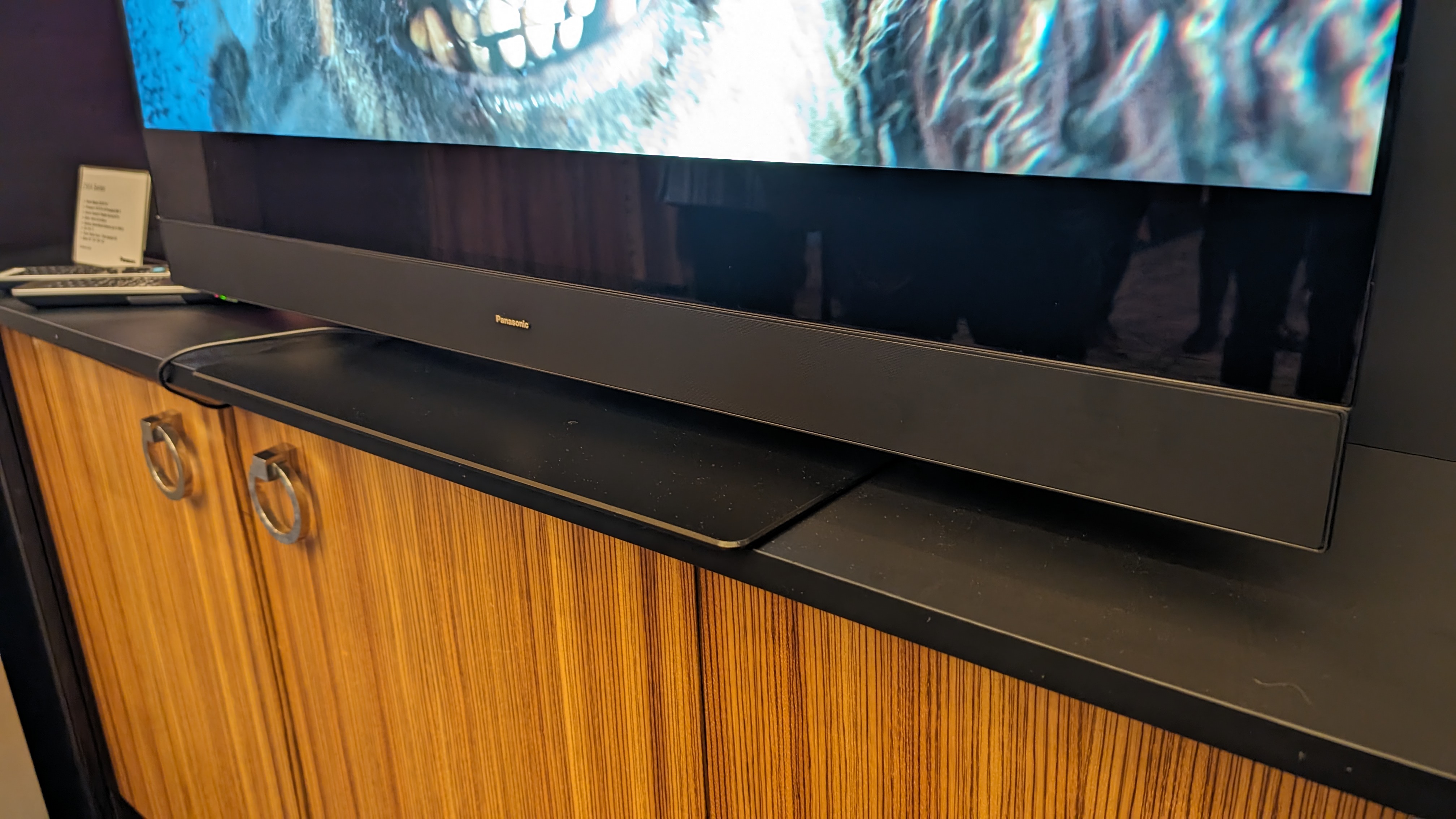
Panasonic didn't confirm the specific driver setup, so all we know is that it’s a basic, non-Dolby Atmos affair that combines a built-in subwoofer and front-firing speakers.
We only got to hear audio from the 42-inch version of the Z90A. The TV was set up on a bench in a large hotel conference room, with a group of journalists vying to get as close to the sweet spot as they could while the demo played the same scene from Kong vs Godzilla first on the MZ1500B, then on the Z90A.
Despite these less-than-ideal conditions, we can confirm the speaker setup delivered a surprising amount of volume, and easily filled the room, with the centre channel in particular delivering enough bass and low-end heft to drive home each of Kong’s chest thumps.
We also didn’t notice any sibilance or distortion, even when the demo was cranked to serious volume levels. if it does prove to be a capable speaker, it could help give the smaller Z90A sets a special place in the market, with most OLEDs around this size, such as the LG C4 and C3, struggling sonically. Of course, you can always ignore the speaker altogether...
Early verdict
It's too early for us to make a definitive call on the Panasonic Z90A but there's certainly plenty here of interest. Panasonic has doubled down on its promise to prioritise picture quality and an “as the director intended” viewing experience, complete with a host of new features we thought would be reserved for the flagship Z95A.
It's a shame that some minor issues haven't been addressed, such as limited HDMI 2.1 connectivity and Panasonic's insistence on loading every model with an attached soundbar, but if the Z90A delivers class-leading picture quality, these will be easy omissions to forgive.
MORE:
These are the best OLED TVs we've tested
We rate the best Dolby Atmos soundbars
I spent a weekend with a five-star Panasonic OLED and it's changed how I feel about Micro Lens Array
Panasonic’s flagship 2024 TV is the Z95A OLED with brighter MLA panel and Fire OS

Alastair is What Hi-Fi?’s editor in chief. He has well over a decade’s experience as a journalist working in both B2C and B2B press. During this time he’s covered everything from the launch of the first Amazon Echo to government cyber security policy. Prior to joining What Hi-Fi? he served as Trusted Reviews’ editor-in-chief. Outside of tech, he has a Masters from King’s College London in Ethics and the Philosophy of Religion, is an enthusiastic, but untalented, guitar player and runs a webcomic in his spare time.
What is a hands on review?
'Hands on reviews' are a journalist's first impressions of a piece of kit based on spending some time with it. It may be just a few moments, or a few hours. The important thing is we have been able to play with it ourselves and can give you some sense of what it's like to use, even if it's only an embryonic view.
